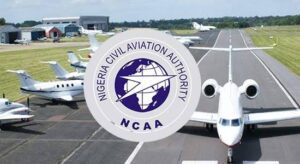
AIB, NATCA, condemn Nigeria’s airline communication system
By Peace Busari
Chairman of the Accident Investigation Bureau (AIB), Engr Akin Olateru and President of the National Air Traffic Controllers Association (NATCA), Engineer Abayomi Agoro and other stake holders of the aviation industry have condemned the epileptic communication mode of Nigeria in respect to the airlines.
Speaking on poor communication between cockpit and control tower, Engineer Agoro decried that poor communication and training on new facilities are needed to improve the situation in the air space.
He explained that airlines are not compliant with some of the new technologies introduced and even staff are not going through their training.
Agoro said, “The issue of communication has been something we have been calling on government and NAMA as service provider to do more on it.”
Speaking further, he added that the poor communication is not only from the ground equipment at times, but air stations adding that, these are some things that can degenerate to incidents or accidents.
While speaking, he said, “Even now that we have data exchange which has to do with the CPDLC not all the airlines are compliant with that and not all the controllers have gone through the training so definitely, it’s one of the areas we have to look critically into to prevent human factors we are talking about.”
Buttressing his point on paucity of communication Representative of the Airline Operators of Nigeria (AON), Captain Akin George said communication system in Nigeria is best described as weak.
He said, “The communication system in Nigeria is quite weak and this has been a recurring problem for the last 10-15 years, Solutions have been put in, we take one step forward and within a month or two we are back to the norm.”
He noted that the communication between aircraft and the services coming out of Kano to Lagos is extremely weak, which in most cases, customers have to get another aircraft to rely on their information.
“Now whilst all this is going on the aircraft does not stay in one place and so you have a dynamic situation, which for me, remains high risk and that is one of the areas we need to tackle as soon as possible in order to reduce the risk.”


